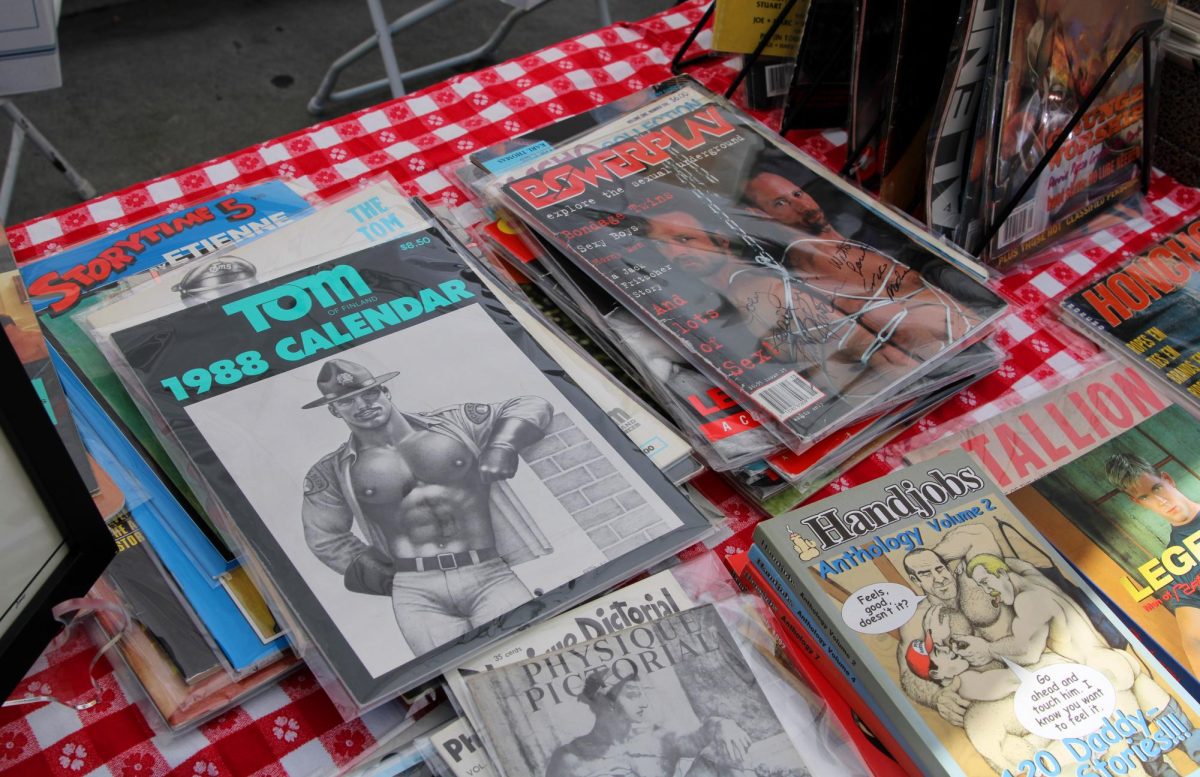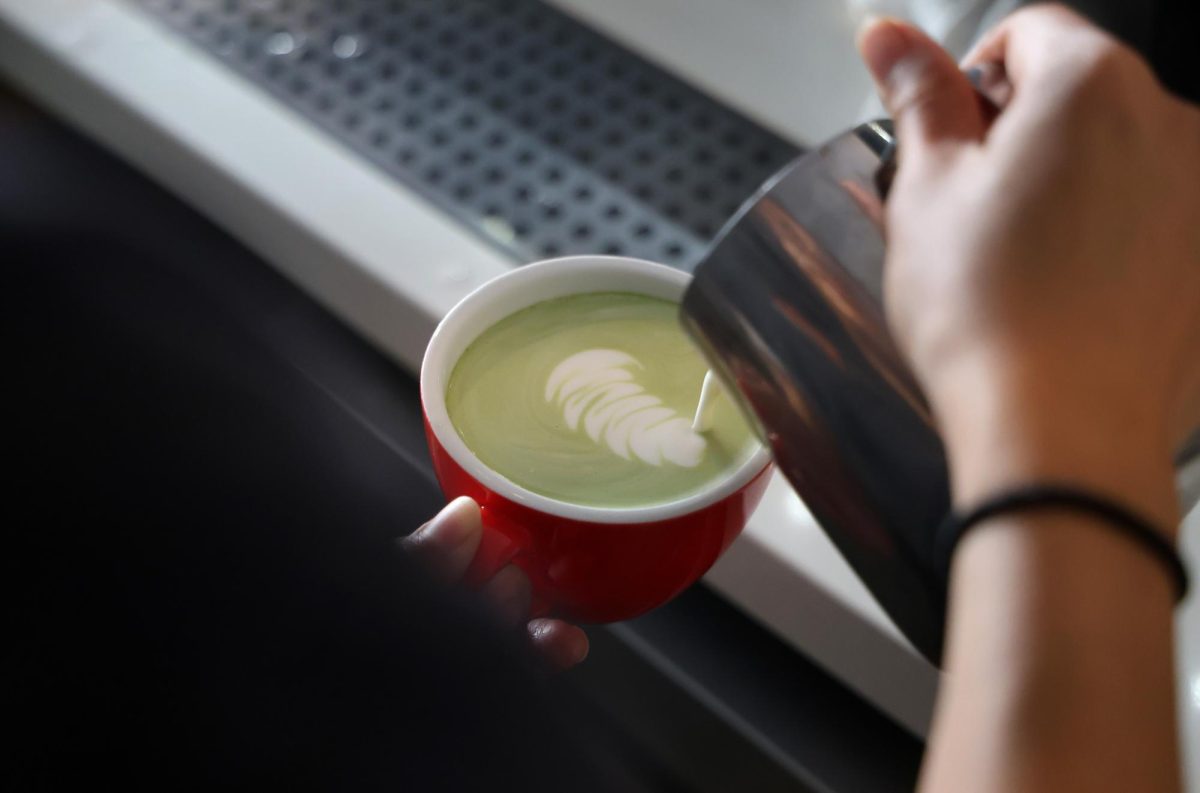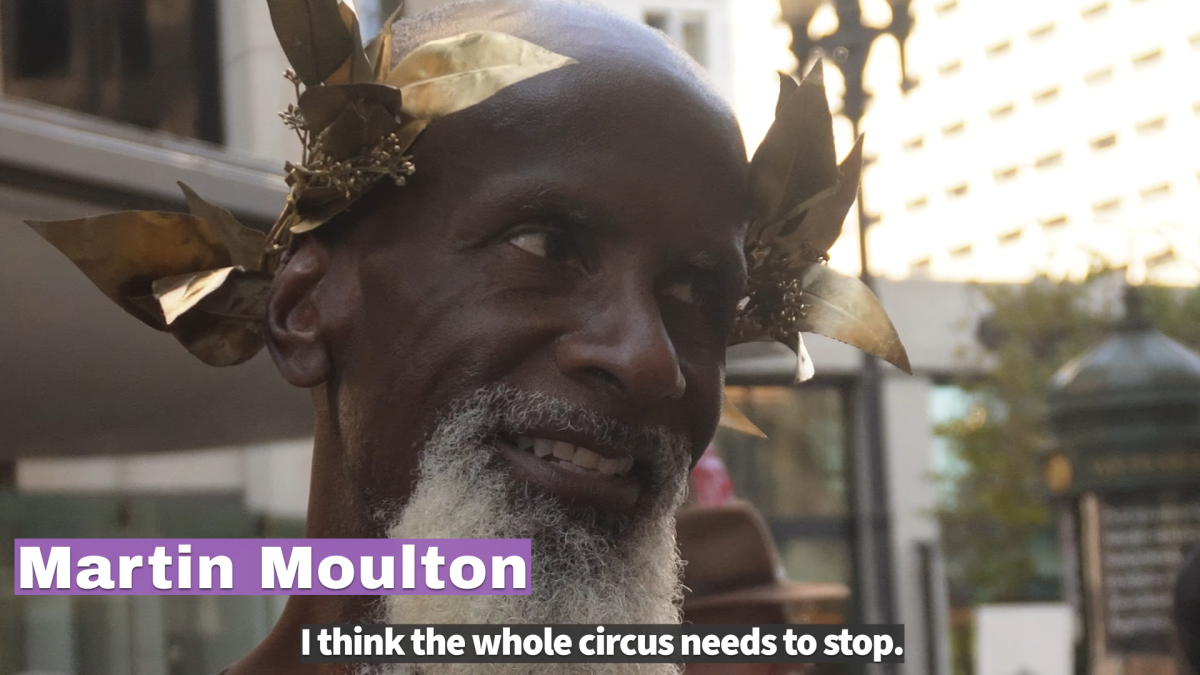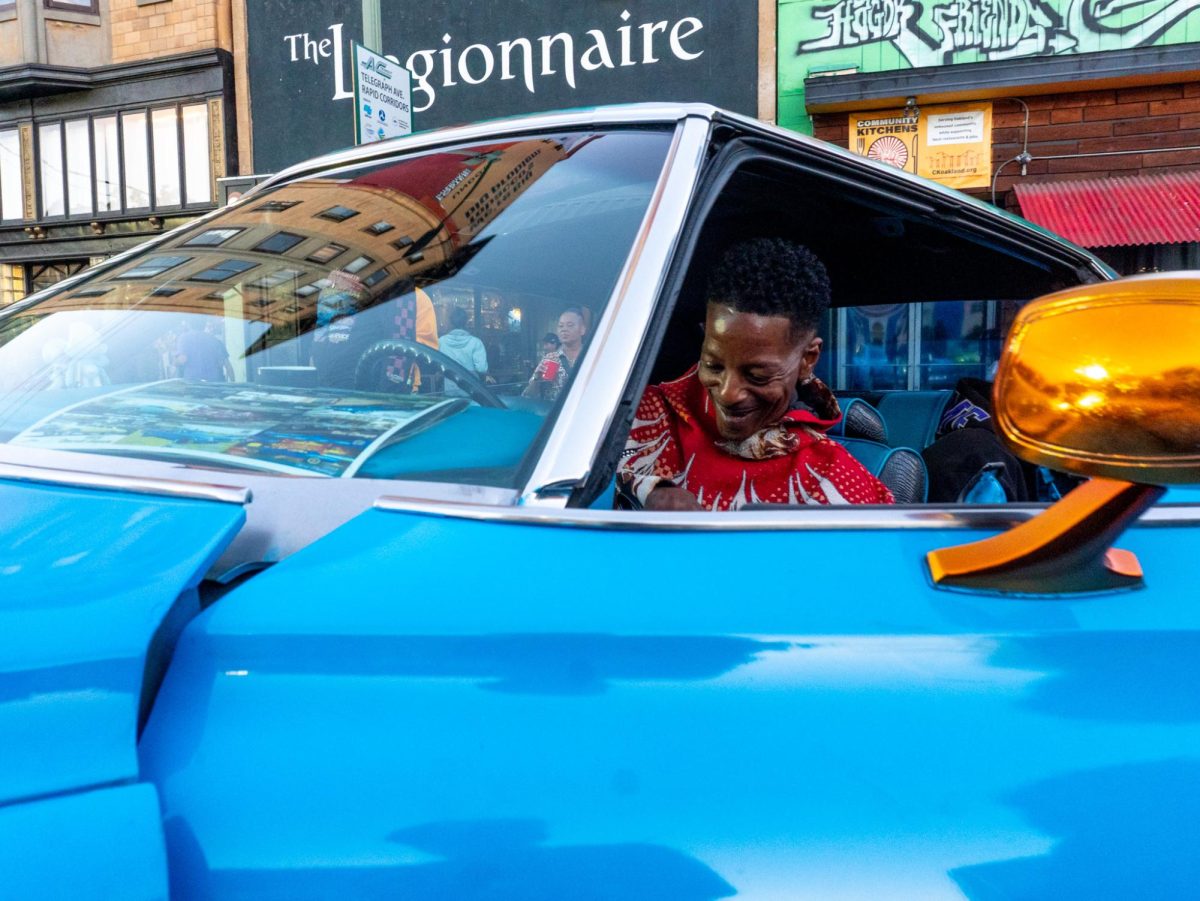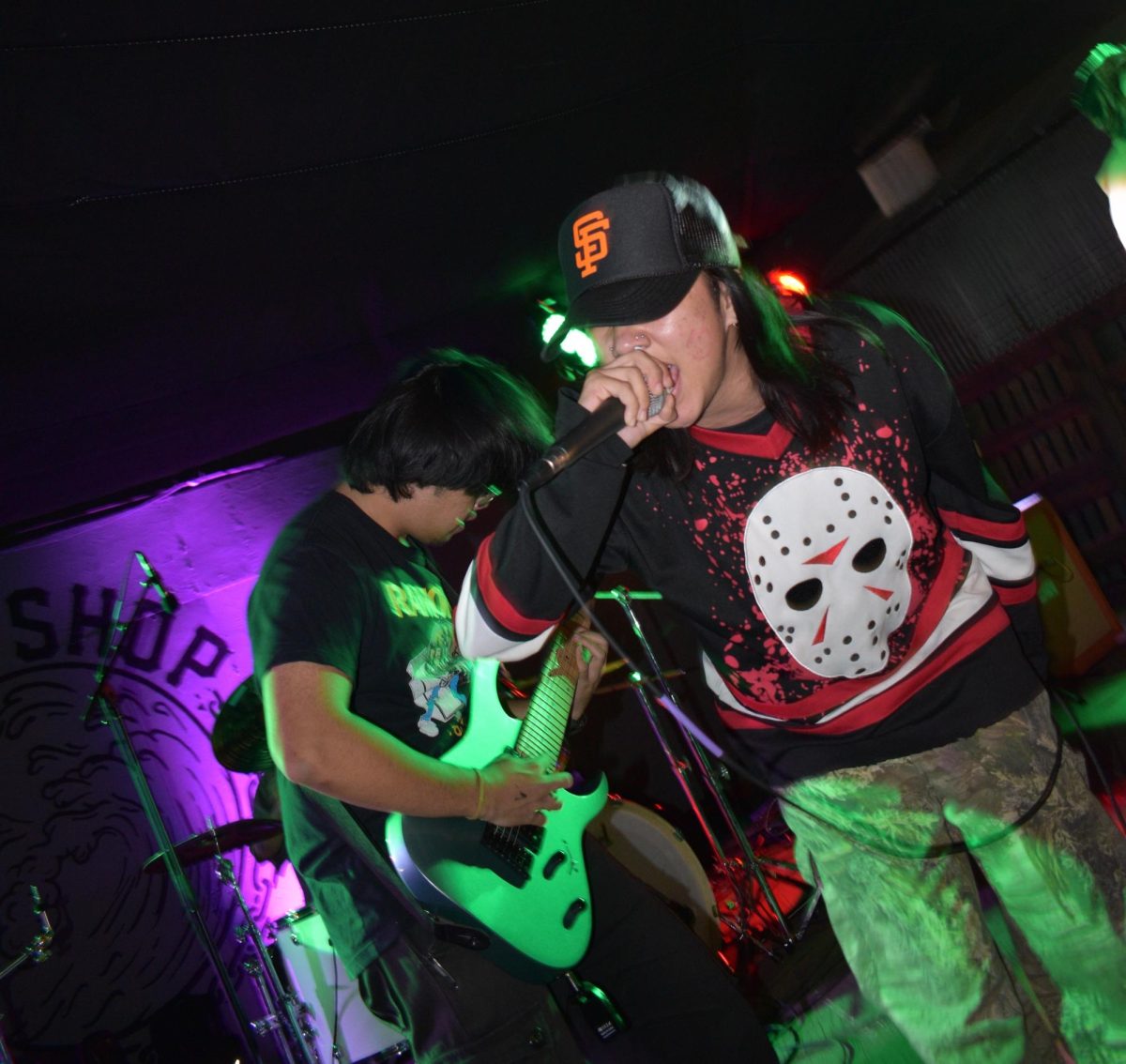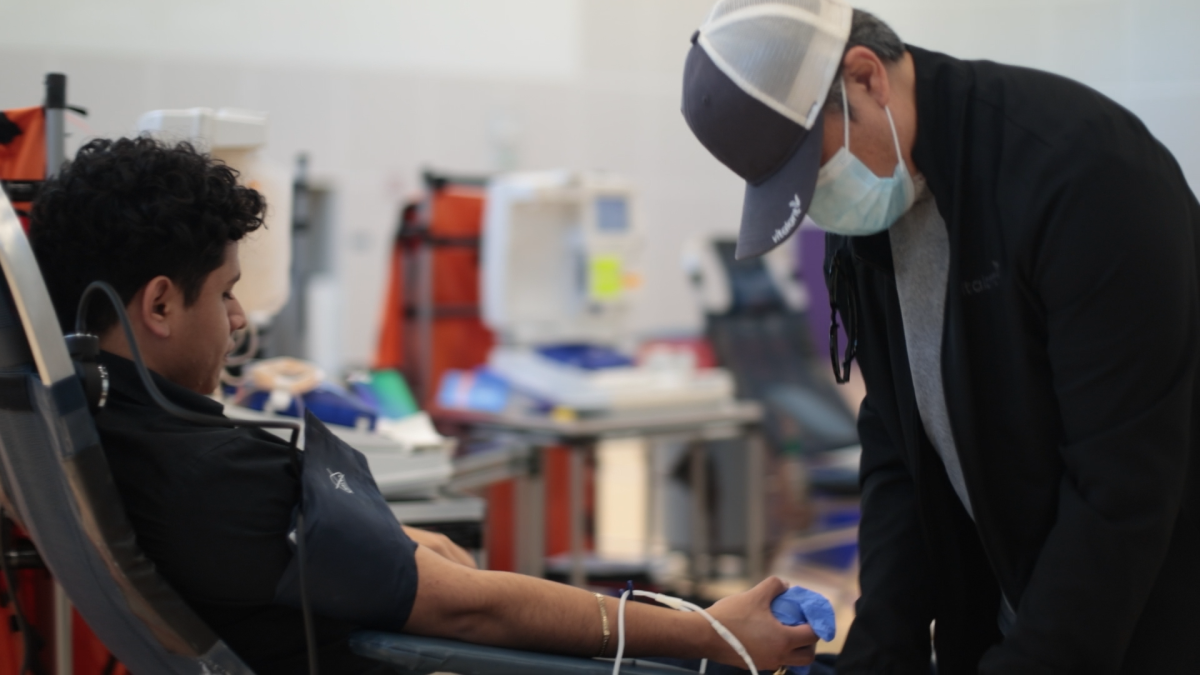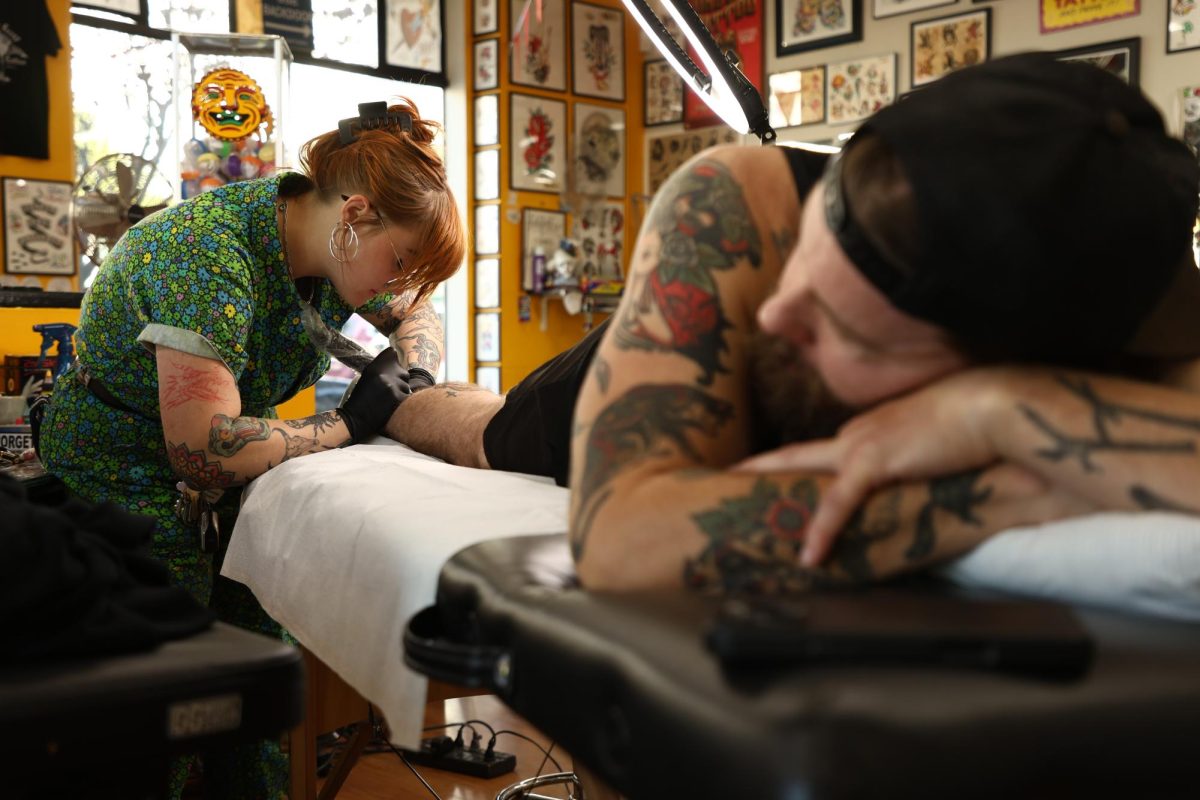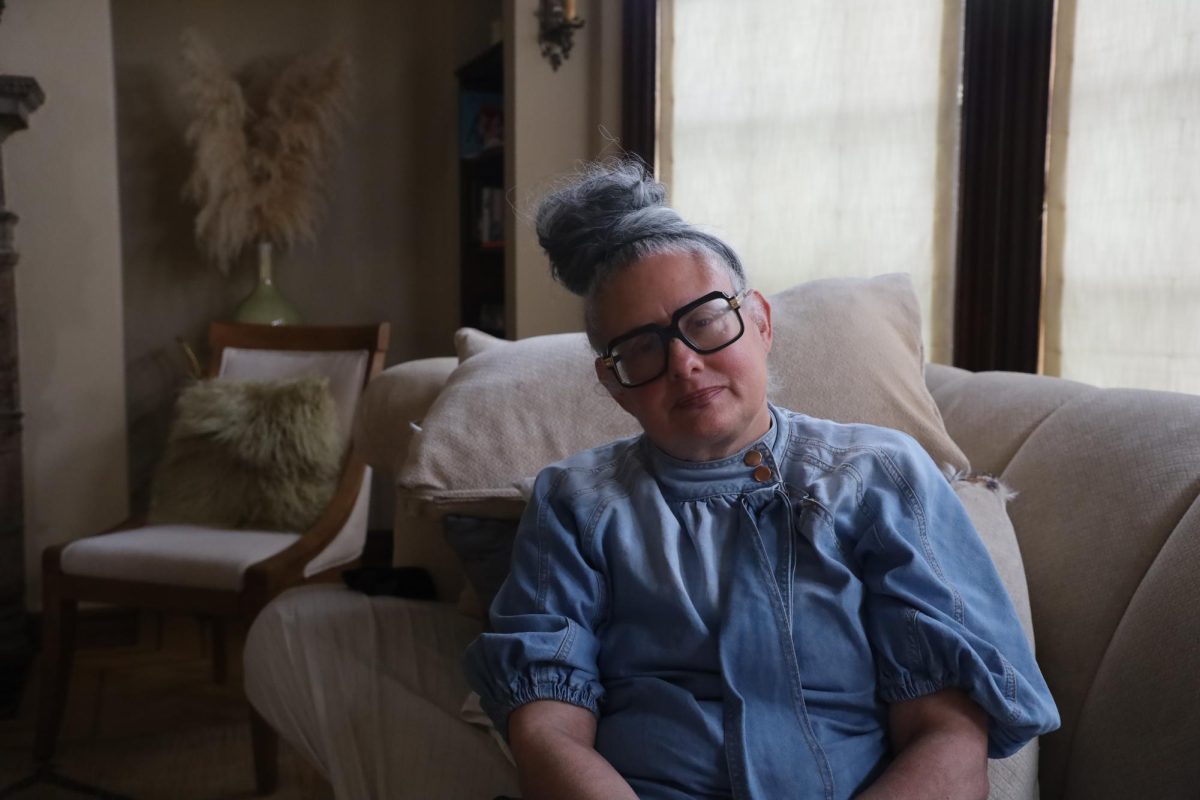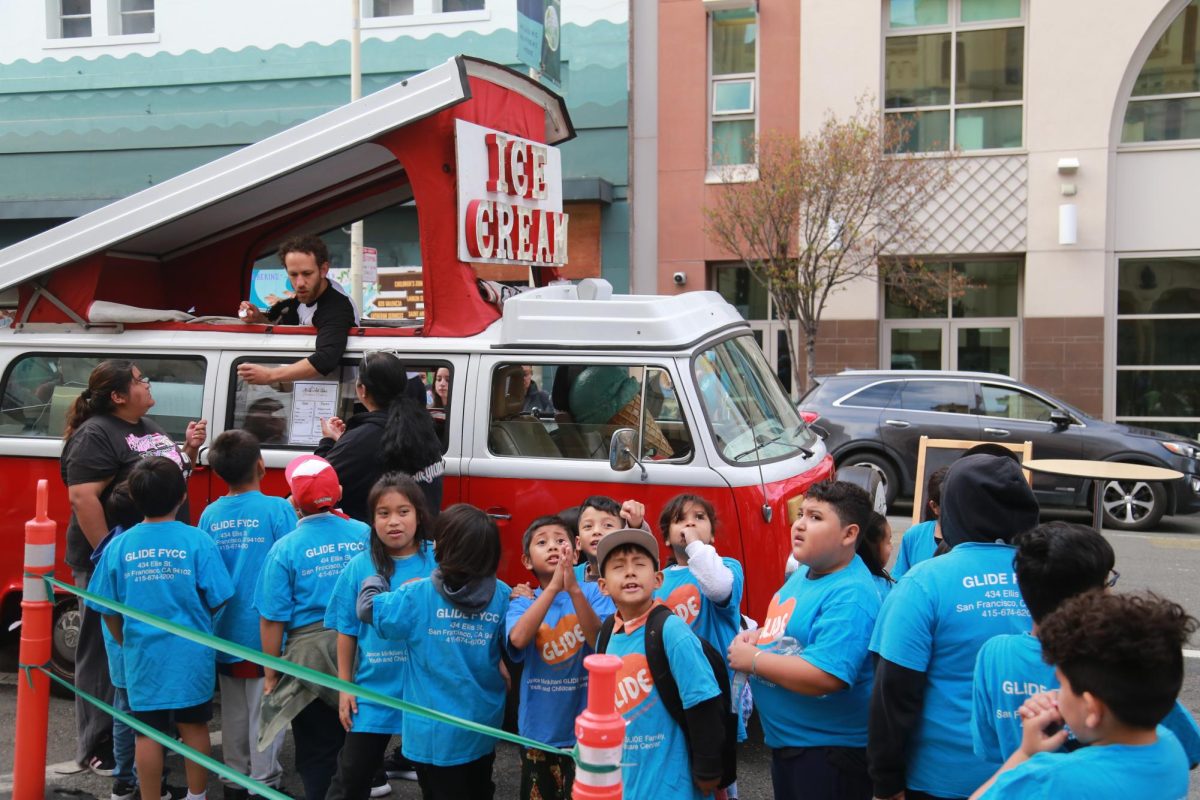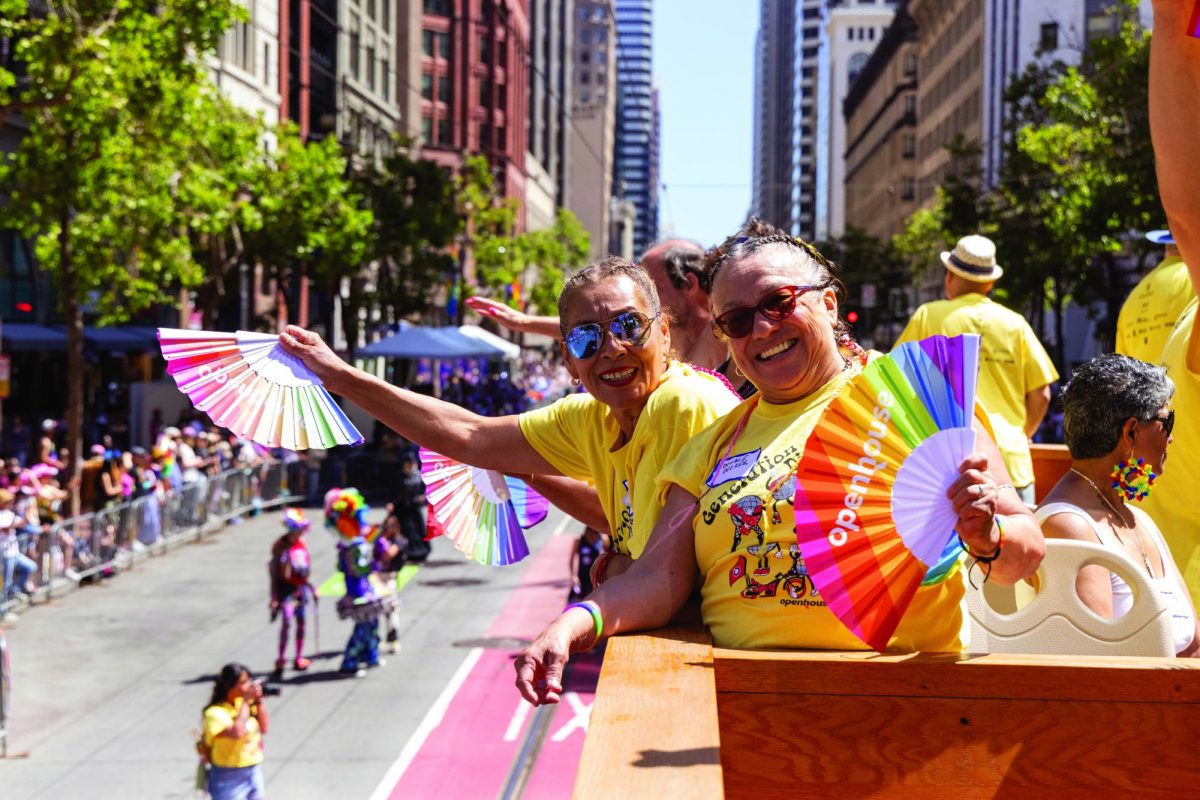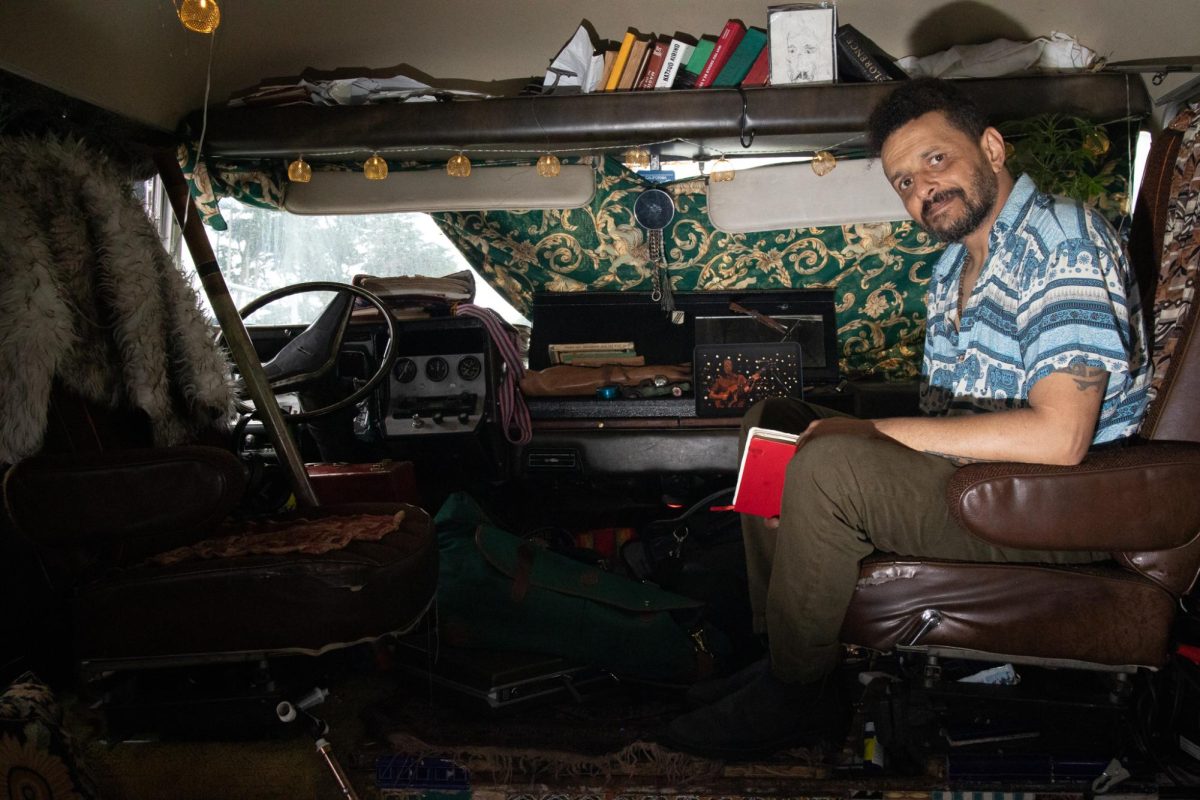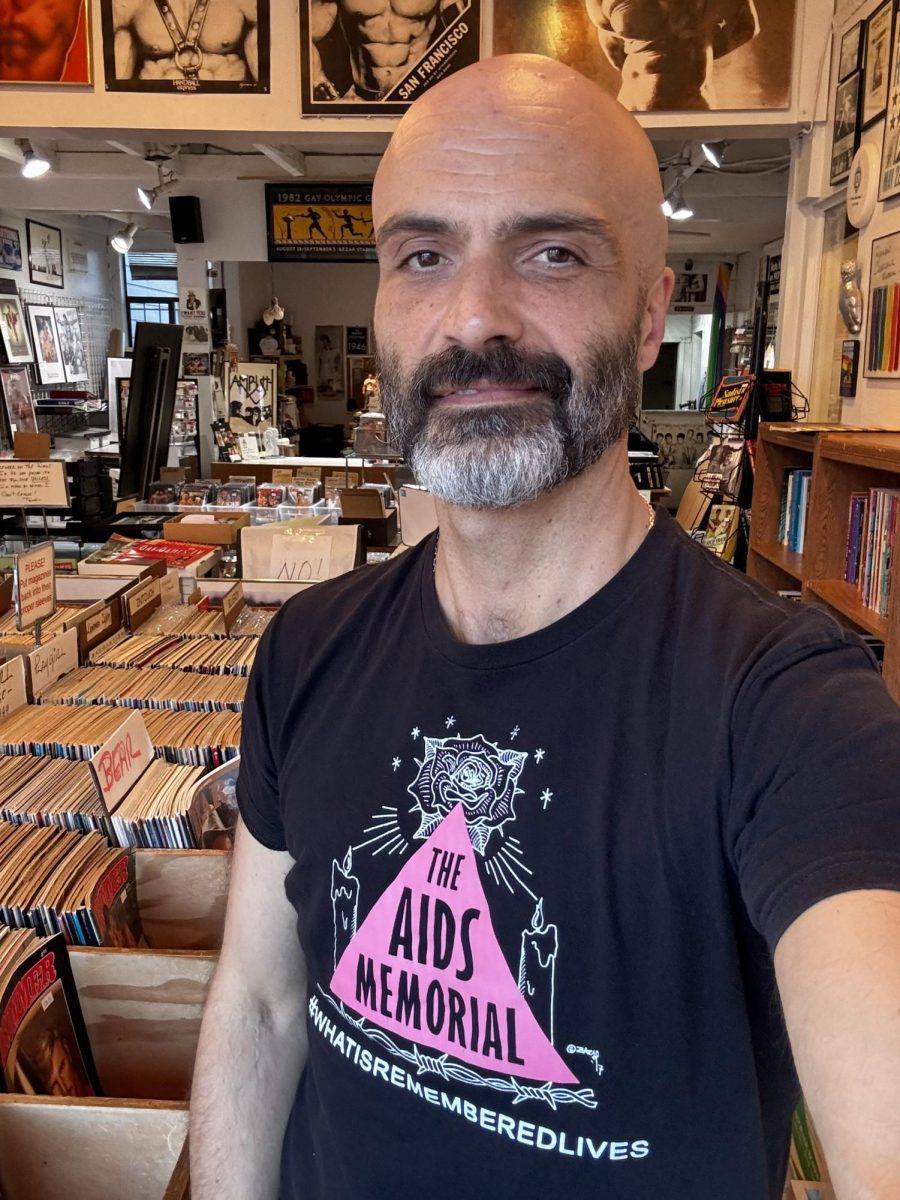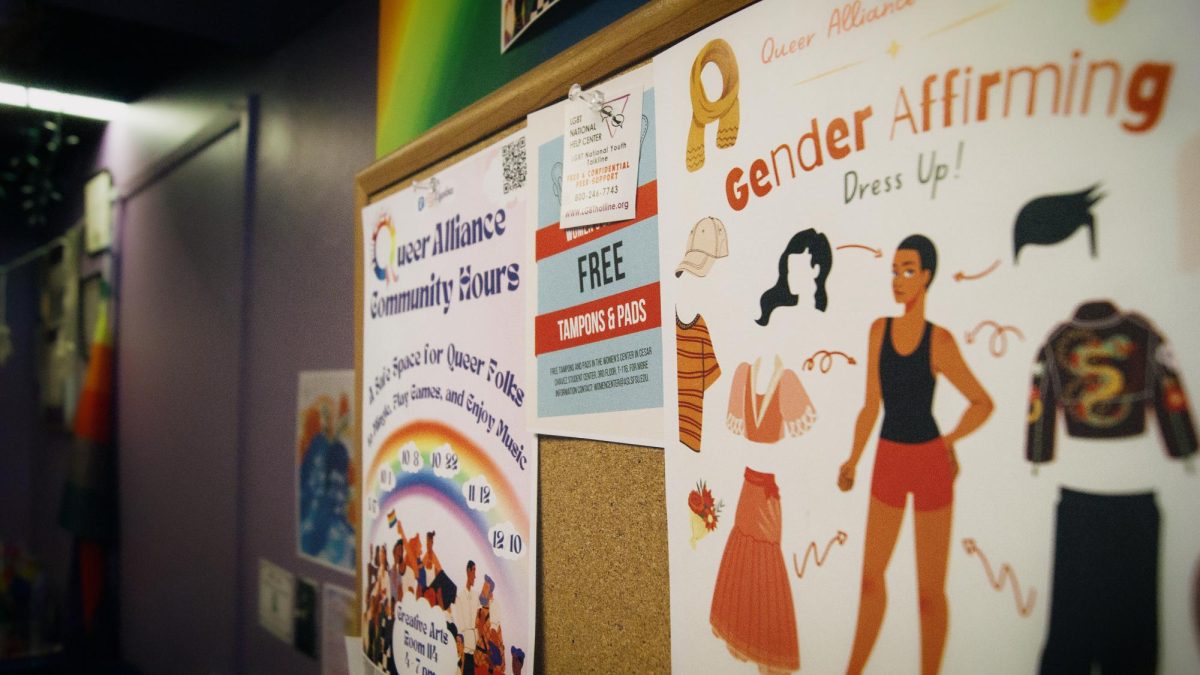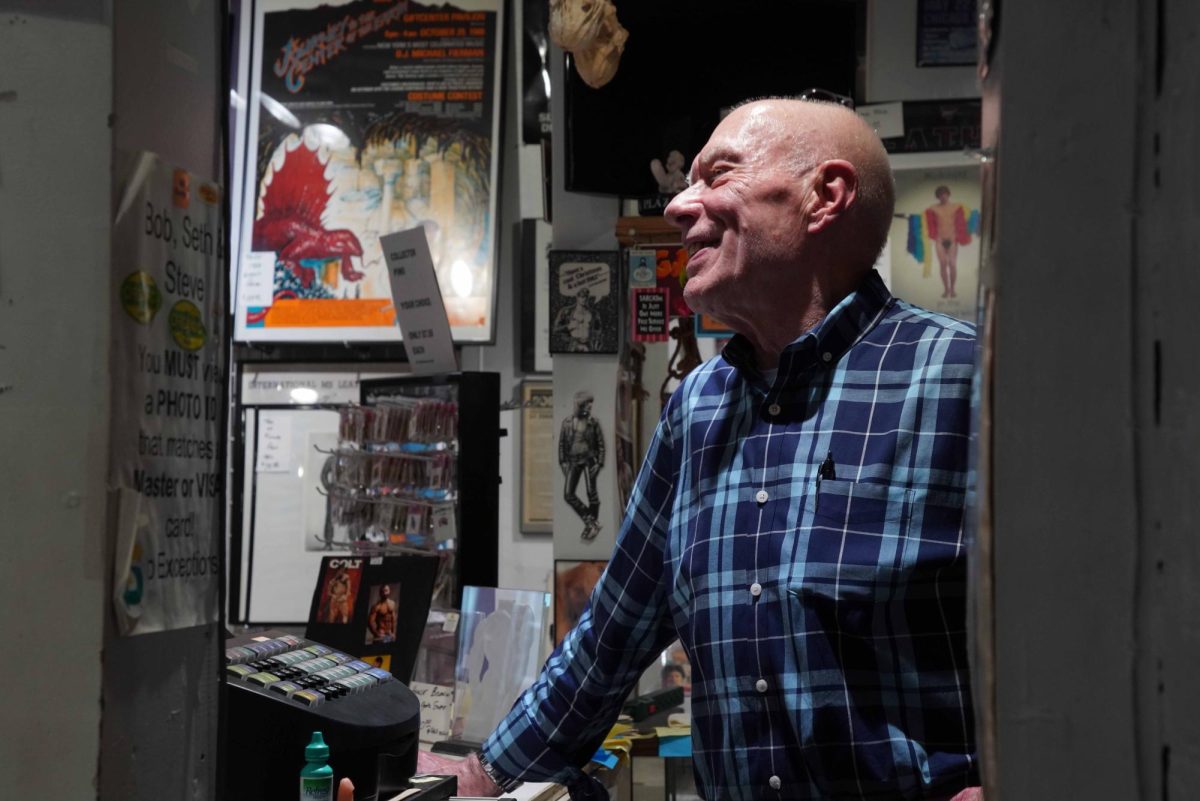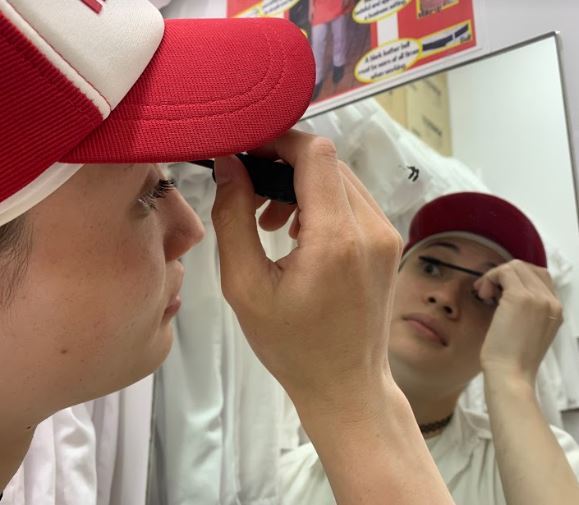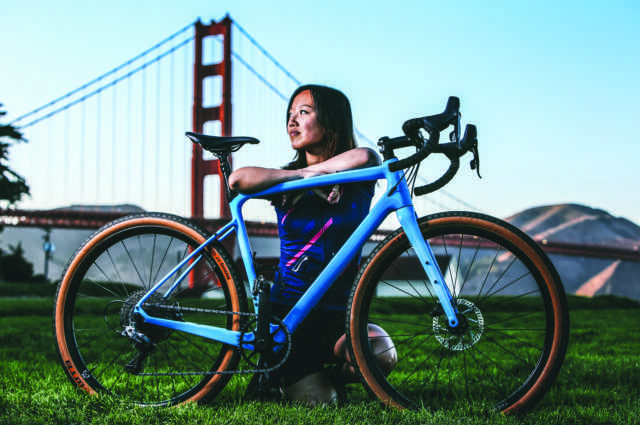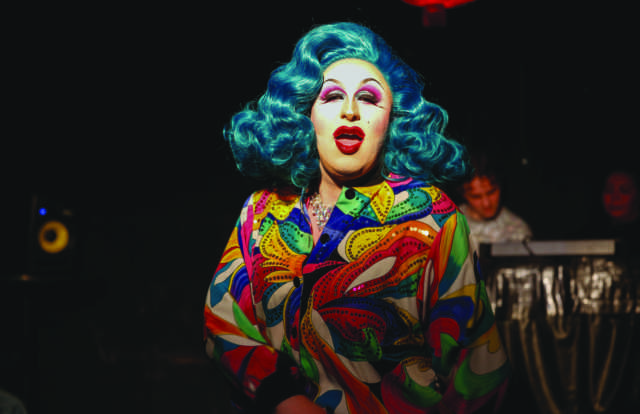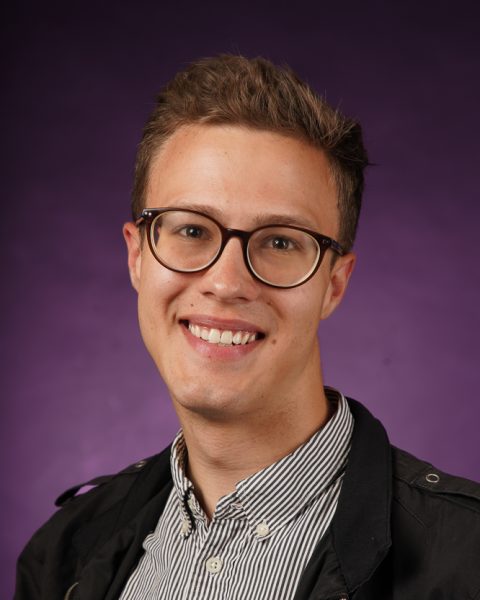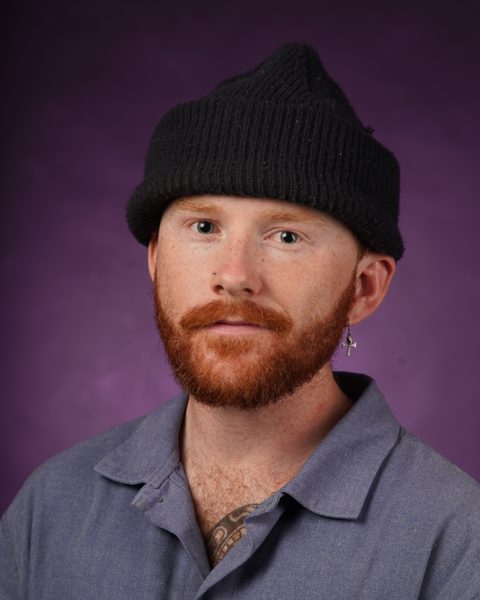Moonlight spills over the rooftops of San Francisco’s South of Market neighborhood, illuminating a peculiar scene in the street below. Men dressed like erotic leather soldiers can be seen standing outside a black-and-blue striped Victorian style house, which practically vibrates from the high-tempo music playing within. They appear as if they could either be from a Hell’s Angels documentary or the set of a pornographic film.
One of them, a man with a captivating gray beard and nose ring, lights a cigar and perches it over the crease of his mouth. The smoke sifts through his mustache and careens over the lip of a black military-style hat that somebody could have plucked from a beach in Normandy. He is performing a special kind of mating ritual.
This act is called cruising in the LGBTQ+ community, using visual and physical cues in public places to find a bedmate. Leaning on the side of the building, standing tall in obsidian colored combat boots, he grabs his crotch in the sight of passersby. A purposefully tight black leather button-up highlights a muscular chest, and the bulge of his penis is seen at attention through pants fashioned with a silver zipper designed for easy accessibility.
He finds his target for the night, a younger man, maybe 23 at most, wearing only a jockstrap, boots and leather vest. He first begins by scanning his body, spending a few noticeable extra seconds locked in on the young man’s crotch. He then approaches. They both have played this game many times before, and they will play it many times more. This is why they have come to the Powerhouse, a leather and cruising bar.
The leather daddy and boy, as younger and older duos in the leather scene are commonly referred to, duck into the dark alleyway next to the bar. They will be seen again tomorrow evening, not in each other’s company, but to do it all over.
The leather community of San Francisco has a deep history, particularly in the SoMa neighborhood, where most of the leather scene is now contained. According to the GLBT Historical Society, the leather aesthetic was catalyzed by Englishman Alan Selby, who moved to San Francisco in the late 1970s. Selby became known as the “Mayor of Folsom Street” and established a famous BDSM store called Mr. S Leather in 1979. But while Selby may have popularized leather, there are other theories about when and how it first appeared.
Longtime Powerhouse bartender Carlton Paul says he heard the aesthetic first caught on because it protected the community against gay bashings and bar raids the San Francisco Police Department would regularly conduct. The SFPD would not harass bikers because of their intimidating appearance, something the gay community took notice of.
“They [SFPD] had this standoffish thing with the bikers,” said Paul, in his thick southern accent. “Some smart gays decided that they could get from their apartment to the bar if they dressed like bikers so the cops won’t beat the shit out of them. That construct of how we became leathermen has this idea behind it of taking masculinity and using it to protect ourselves.”
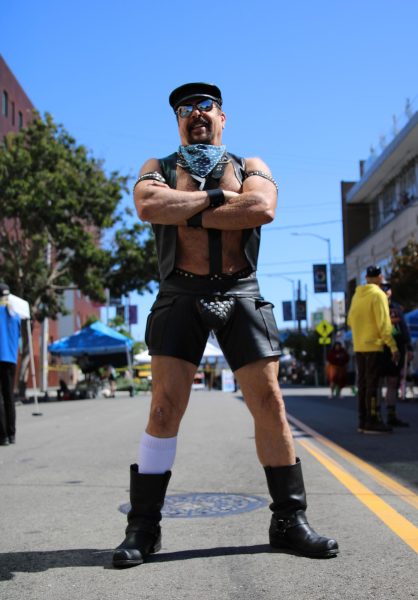
Leathermen are part of the greater bondage, domination, sadism, and masochism scene, or BDSM for short. But underneath all the leather is just a community of guys who like to have fun and who care about each other.
“It [the bar] sets people free,” Paul said, while slicing a fresh cucumber for drink garnishes. “They come here and have a drink – or not – and they feel free to misbehave. My job is a conductor of frivolity. Because when people come to the Powerhouse, [they] come to the Powerhouse to cut up.”
Many people who come to these spaces seem to be set sexually free. Leather bars are playgrounds for human sexuality; prudishness is seemingly left waiting outside like a roommate who’s lost his house key.
“Tonight is an underwear party,” said Paul. If you go to Powerhouse any Thursday you’ll likely see throngs of men in their underwear dancing, drinking and potentially some more “heated” action in the smoking area outside, according to Google reviewer Jay Berrios.
But in addition to the sexual energy, there’s also a sense of community in the leather bars. Many of the leather folk are also community organizers who advocate for the BDSM community’s interests. Their self-advocacy efforts even resulted in establishing the Leather and LGBTQ+ Cultural District in 2018 by Mayor London Breed, the world’s first of its kind.
“We’ve done a lot of work with legislation,” said Supervisor Matt Dorsey, who oversees the SoMa neighborhood. “Continuing to honor the history and cultural enrichment that this community brings to the city at large is really important.”
Supervisor Dorsey most recently showed his support for the leather community by awarding the Bare Chest Calendar’s competition winners certificates of honor for their fundraising efforts and contributions to the community. The Bare Chest Calendar is an annual competition where men compete to have themselves represented in a calendar. Proceeds from the calendar and other fundraisers the winners participate in go to that year’s beneficiaries.
“I made sure I went out and got ribbon that was [colored like] the leather flag,” Supervisor Dorsey said, referencing a flag with black and blue stripes, a streak of white in the middle, and a heart in the top-left corner that represents the leather and BDSM communities. “Because I wanted it to be special for the district I represent.”
The Bare Chest Calendar raises funds primarily for the PRC, previously known as the Positive Resource Center. The PRC is an organization that provides support and services for community members affected by HIV/AIDS, addiction and mental health afflictions. This year alone, the organization raised $262,956, shattering all previous fundraising records throughout its 40-year history.
Community leaders are also pushing for more diversity in the leather scene, which historically has been more friendly to cisgender white men. Even today, many of the leather bars are considered to be exclusionary to gender expressions other than male. Some leathermen see this as cultural preservation, while others see it as an opportunity for growth.
“There’s clearly been a lot more momentum since the pandemic,” Katherine “Mama Kat” Rose, a beloved community organizer, said. “And I think that’s because we need each other. We need each other’s energies. We need the different things we all bring.”
Mama Kat, while wearing an intricately designed leather trench coat and round sunglasses, was attending an event held by the Leather and LGBTQ+ District called “Play on the Plaza”. She says even though she loves the city, she had to leave San Francisco for a brief period because of the harassment she had faced. But today she’s back for good and is the reigning Ms. SF Eagle Leather. Mama Kat is also the first trans woman to win the competition.
Now, she’s using her title to give back to her community.
“All of us [titleholders] raise money for charity,” Mama Kat said. “One of the first things we do is identify a charity that we want to raise money for, and then all of our fundraising efforts for that year go into raising money for that charity.”
What’s kinkier than giving back to your community? Well, maybe Folsom Street Fair, an annual BDSM festival that attracts more than 250,000 kinky pilgrims to get their freak on in the streets of SoMa. The event even got Berlin kinksters so horny that they started their own version in 2003, called Folsom Europe.
Jukie Schweit, operations manager of Folsom Street, the nonprofit that runs the fair, said the event is more diverse than ever before in its 41 years of existence.
“Folsom Street Fair right now has the most diverse group of people that have been at the helm,” Schweit said, her eyes lighting up from behind her hot pink glasses. “Everyone is a mixture of genders, backgrounds, kinks and colors. One of the things we’re pushing for is to have more diversity at the fair so all attendees can feel welcome.”
So, in addition to the lust and leather, there’s a lot of love in this community.
“They’re all just a bunch of gay men who like to exchange cooking recipes,” Kristofer Weston, a household name in the global leather community, said while producing a hearty laugh. “When you get into a dom-sub role in the bedroom, there’s a dynamic that occurs. But there’s also real life that occurs outside of that.”
Weston grew up in the conservative state of Wyoming and was often captivated by movies like “Wild Wild West,” where the hero is captured and tortured. This dynamic, in Weston’s own words, really got him off. He would take fantasies like that one to reality during college at Arizona State University.
“They paid $300 if you came and you wrestled around in your jockstrap,” Weston said, explaining how he got his start by answering an ad in Los Angeles’ Frontier Magazine. “I needed money for college, so it was kind of a no-brainer. And they would pay you an extra 50 bucks if you came, so I would always opt for that.”
Weston himself is a veteran of the leather and BDSM communities. He’s dedicated over 20 years of his life to producing for and acting in BDSM porn with famous porn studios, such as Falcon and Colt. But now he and his partner of 10 years, Tyler Rush, known to the kink community as a puppy named Pup Amp, produce the BDSM education podcast “Watts the Safeword”.
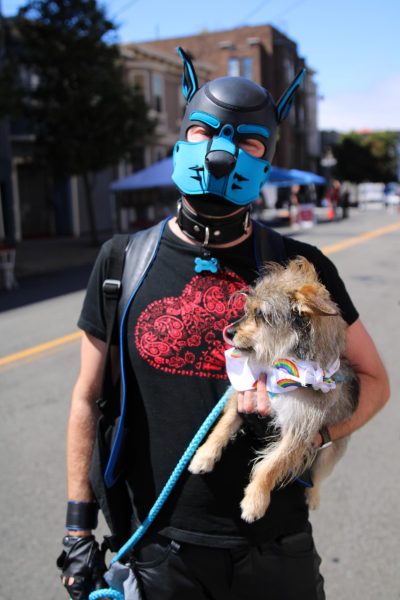
Puppies are a leather subgroup who often roleplay as dogs in both sexual and social situations. Usually, they wear a leather hood resembling a dog and sometimes a tail. They have a fairly sizable community in San Francisco.
“I think the younger generation needed a safe sex outlet,” Weston continued. “[Because] my generation, with their full leather and hardcore imagery, was scary. It’s kind of like cosplay in a way. They don’t have to communicate verbally. They can go ‘bark, bark,’ and shake their tail.”
A tail in this case is generally a butt plug with a rubber tail on the end. But in order with what Weston said, statistics show that young people are evidently more interested in exploring alternative sex.
Feeld, a dating app that markets itself towards more open minded users, conducted a study earlier this year alongside Indiana University’s Dr. Justin Lehmiller. Dr. Lehmiller works with the Kinsey Institute, which studies issues relating to sex and gender. With data collected from Feeld, Dr. Lehmiller found that Gen Z users had a 55% chance of discovering a new kink using the app, suggesting that Gen Z could be the freakiest generation yet. Millennials were 49% likely, Gen X 39% and Baby Boomers were least likely at 33%.
Weston and Amp are huge supporters of kink education and use their platform on “Watts the Safeword” to educate viewers and break down stigmas around sex. Weston also hosts a podcast called “On Guard Cigar Salon,” where every month he talks with community members about issues and changes within the leather scene.
“My message for people wanting to explore kink is to do it at your own pace,” Weston said, his voice shifting from conversational to almost parental. “Don’t think that you have to go from one to one-hundred overnight. Find someone you trust and who can guide you.”
SF State’s Education and Referral Organization for Sexuality has information for students interested in exploring the BDSM community, in addition to a plethora of other sexual health resources.
“When you trust someone and you let them have power over you, there’s this cathartic thing that happens in your brain,” Paul explained, while opening the doors to his bar for the evening service. “It can take sex to a place that is more intimate. You’ve experienced this thing together, and so leather can be a gateway into a more intimate relationship.”
Students can find events related to BDSM and the leather community through Folsom Street’s website, or can even attend the Folsom Street Fair on Sep. 29th.



